This
post was originally published on
this siteOriginally posted at: http://www.nerdfitness.com/
So you wanna learn about the Paleo Diet, eh?
Here’s the ENTIRE diet in a nutshell:
If a caveperson didn’t eat it, neither should you.
Now, obviously there’s more to it than that, and that’s what I’m going to cover in great detail with this article today.
When you are following the Paleo Diet, you can eat anything we could hunt or gather way back in the day – things like meats, fish, nuts, leafy greens, regional veggies, and seeds.
Sorry, the pasta, cereal, and candy will have to go! Anything that didn’t exist in caveman times will not be existing on your plate or in your stomach.
And instead of counting calories and perfectly partitioned portions (say THAT three times fast), you’ll be focusing on eating the right foods instead.
And that makes me happy, because I hate counting calories. Maybe you do too.
I don’t like keeping track of how much I’ve eaten or obsessing over how many grams of a particular nutrient I’ve had. Not only do I hate counting calories, but I know that calories are really only half of the battle, as they’re not all created equal – 400 calories of Doritos do NOT have the same effect on your body as 400 calories of high-quality vegetables and protein.
Fortunately, if you can expand your horizons and remove certain types of food from your diet, you can stop worrying about counting calories FOREVER and instead focus on fixing your relationship with food.
Now, this article is SUPER long, so we took the liberty of converting it into a nicely designed guide for easy consumption (not literal consumption, unless you print it on bacon).
Grab your Beginner’s Guide to the Paleo Diet free when you sign up in the box below:
Get the FREE eBook! The Ultimate Beginner’s Guide to Paleo!
- Discover if Paleo is for you
- The one simple trick to know if your food is Paleo-friendly
- Easy Paleo recipes for beginners to get you started
If you are interested in learning more about the diet, and want to learn how to successfully implement it, we got you covered!This diet does have a ton of pitfalls and challenges that you’ll encounter as you start to change your life, and most people give up on the Paleo Diet within a few days!
So let’s dig in.
The Paleo Diet doesn’t require counting a single calorie AND it allows you to eat until you’re full and happy.
Oh, and it can help you lose weight, build muscle, and get in the best shape of your life.
I know, that sounds like an ad for some really shady supplement or diet book that you’d see on TV at 4 AM.
But if you can actually apply the rules of the Paleo lifestyle, you can get some pretty solid results.
It’s helped many people achieve jaw-dropping transformations, including my friend Saint, (whose story you can read here):
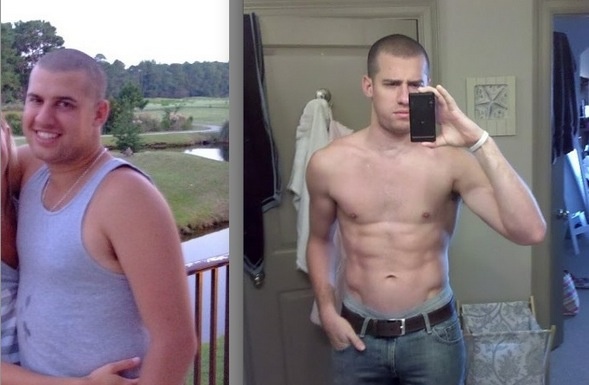
Or Staci from Team NF.
(she’s actually our lead Coach in our 1-on-1 Coaching Program):
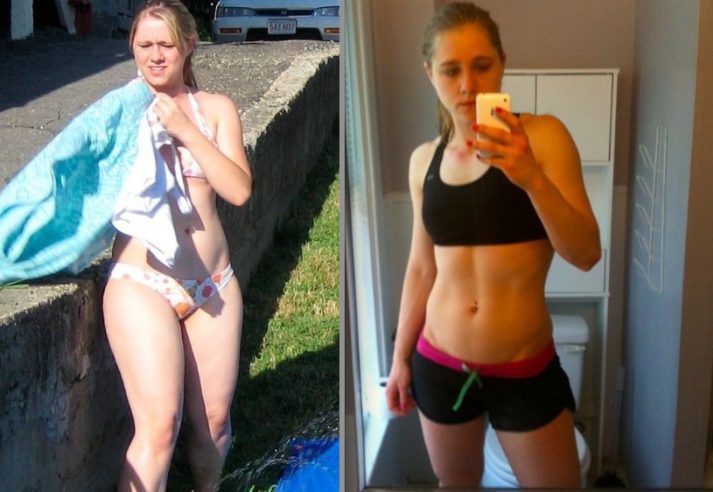
But you need to do it right. You need to have the right mindset, you need to focus on the right foods, and structure your environment so that you’re not tempted to backslide and abandon the Diet after a few days.
Ready? LET’S GOOOOOOO!
So how does the Paleo Diet work?
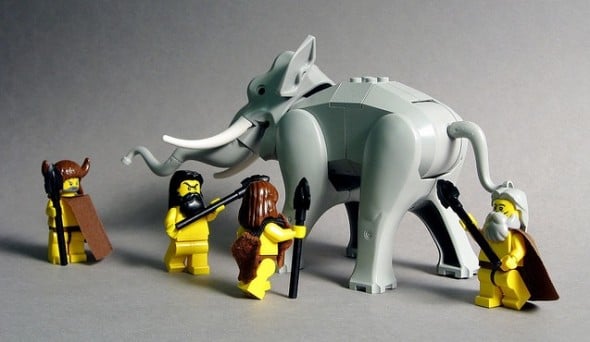
Oh lord, another “diet.”
I know, it sounds like a fad/marketing ploy, but The Paleo Diet isn’t really a “diet,” and it’s actually quite legit.
It’s also the most time-tested diet ever. So, the opposite of a “fad.”
You see, tens of thousands of years ago, before Nike, Cap’n Crunch, and Healthy Choice meals, our ancient ancestors thrived as hunter-gatherers.
Although it’s been a really long time, our genetics haven’t changed that much since then. And yet…
The average Homo Sapien back then: muscular, agile, athletic, and incredibly versatile.
The average Homo Sapien now: overweight, out of shape, stressed out, unhappy, sleep deprived and dying from far too many preventable diseases due due to lifestyle choices.
So what the hell happened? Agriculture!
A few thousand years ago, humans discovered farming, the agricultural revolution took off, and we advanced from hunter-gatherers to farmers. We settled down, formed societies, and the human race progressed to what we are today. Which is obviously great for a number of reasons (air conditioning! Nintendo! cars! Not getting eaten by wild animals!)
The problem is, our bodies never adjusted properly to eating all the grains and sugar that we we’re now consuming.
As paleo guru Robb Wolf puts it, think of a 100-yard football field. The first 99.5 yards are how long Homo-Sapiens spent as hunter-gatherers. As they became REALLY good at hunting and gathering our bodies adapted to that lifestyle over thousands of years. That last half-yard represents our species after the agricultural revolution, where our diet has shifted (but our genetics haven’t).
So, instead of loading up on meat, vegetables and seasonal fruits, we’ve become a species “dependent” upon grains – bread, pasta, rice, corn, and so on. The government continues to recommend 6-11 servings of grains a day, and people continue to get fatter and fatter by the day.
66% of us are overweight, 33% are considered obese, and those numbers are only getting worse [1] .
Clearly something’s not right, and we need to fix it.
The Paleo Diet is an effort to go back to eating how we’re biologically designed to eat, allowing us to tap into our genetic potential and start living healthier immediately.
WTF is the Paleo Diet?
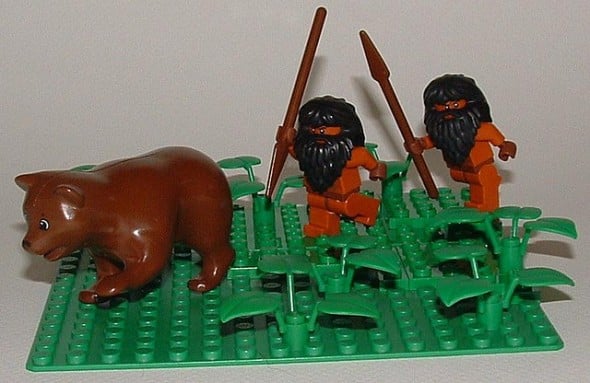
Back in the day, grains weren’t part of our diet.
When we (over)consume grains regularly, our bodies take those grains, which are composed of carbohydrates, and those carbs get turned into sugar in our system.
That sugar is then either burned as energy or stored as fat. That’s right: the grains you’re consuming are stored as fat in your body and they’re what most Paleo experts believe are the main culprit in why you’re overweight.
So, rather than me explain that part with thousands of words, just watch this three-minute video – “Why You Got Fat“
Next, most grains contain gluten and lectins. What are they and what’s wrong with them? I’m so glad you asked:
- Gluten is a protein found in things like rye, wheat, and barley. It’s now being said that much of our population may be gluten-intolerant (hence all the new “gluten-free!” items popping up everywhere). Over time, those who are gluten intolerant can develop a dismal array of medical conditions from consuming gluten: dermatitis, joint pain, reproductive problems, acid reflux, and more.[2]
- Lectins are natural toxins that exist in grains to defend against consumption! Yup. Grains have evolved to keep themselves from being eaten by us. These lectins are not a fan of our gastrointestinal tract, and they prevent the tract from repairing itself from normal wear and tear. This can cause all kinds of damage.
Long story short: our bodies don’t process grains well, and they are causing a boatload of problems.
The Paleo Diet also almost completely eradicates sugar. Unless you’re getting your sugar from a fruit, forget it. Sugar causes an energy spike and crash in your system, turns to fat unless it’s used immediately, and wreaks all kind of havoc on our bodies.
So, no grains, no sugar, no processed foods. Whether you’re talking about the paleo diet or not, many studies have shown that an incredible number of diseases and lifestyle issues can be reversed with these three simple changes.[3]
So I can already see the gears turning in your head.
Yes. The reason the Paleo Diet works is primarily due to the fact that you’re eliminating all of the high calorie, low energy, junk foods from your diet. Which means you’re going to, on average, eat fewer calories than you’ve been eating in the past.
Which will lead to weight loss over time!
The reason Paleo works for some people: as I lay out in my “Which diet is best for you?” article, it comes with built in, black-and-white, eat this not that Rules to follow. It removes calorie counting and practically ensures you ONLY eat food that fill you up but aren’t loaded up with calories.
But where’s my energy?
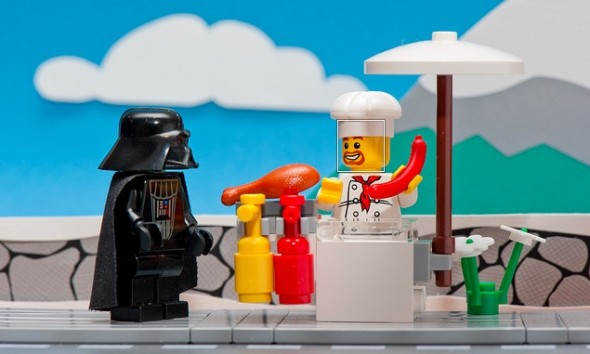
So, if we’re not eating 300+ grams of carbs every day, where are we supposed to get our energy from?
Our bodies can operate on a lower number of carbohydrates than what we’re used to eating, so fewer carbs isn’t an issue once you re-train your body to process the food you’re eating.
When there is an absence of carbs (which is how we’re USED to operating), our body will take stored fat and burn THAT for energy in a process called ketogenesis. This is the premise behind the much hyped, effective but oh-so-tough-to-stick-with “Keto Diet.”
In addition, because you are NOW consuming fewer calories than you were on average, your body is in a caloric deficit. Which means it needs to get its energy from somewhere – how about the fat stores you already have? This is the goal with weight loss.
What I’m trying to tell you is that our bodies are pretty effin’ efficient.
So, fewer carbs = less glucose in your system, which means your body will have to start burning fat as your fuel source. Which means… decreased fat storage and decreased body fat percentage and increased good-lookingness.
Win!
So, all carbs are bad?
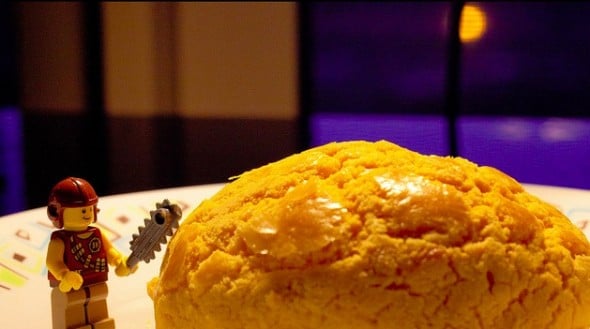
Nope.
Carbs still serve a purpose in our diets, but they’re not essential [4].
Carbs aren’t evil – they’re just…carbs. But your body does process them differently than other food sources.
The challenge is that carbs tend to be calorically dense (lots of calories) without being satiating (meaning you tend to eat way more than you intended).
I prefer to get my carbs from vegetables, sweet potatoes, and fruit. Why is that? These foods are naturally occurring in the wild and don’t need to be processed in any way (unlike grains) in order to be consumed.
The other great thing about vegetables is that they’re incredibly nutrient dense and calorie light – six full servings of broccoli (and who would eat 6 servings at once?) has 180 calories and 36 grams of carbs. A single serving of pasta (and NOBODY eats just one serving of pasta) has 200 calories and 42 grams of carbs.
Now, eating paleo does not automatically mean that you are doing a ketogenic diet (no carb) or a low-carb diet.
However, even if you have a serving of sweet potato (26g per 1 cup serving) with every meal, it’s likely a lot lower in carbs than you’re used to having.
We do recommend keeping your carb content low – loading up on buckets of fruit is technically Paleo, but can result in a ton of carbs and sugar consumed (and thus, fat gain. Fail).
I’ll cover that more below too, as it’s one of the pitfalls to avoid with successfully going paleo. If you’re worried about adherence to the diet, I understand – it’s the toughest part of Paleo – sticking with it!
Knowing what to eat is part of it, but following this fairly restrictive lifestyle in a modern environment surrounded by cookies and candy and bagels and pasta is really difficult! Factor in the “carb flu” you might go through in the first few weeks (as your body gets weaned off of carbohydrate fuel and habits), and most people give up on the Paleo diet long before it creates lasting change!
Does this sound like you? Worried about how to stick with this diet when you live a busy life and work long hours and also want to lose some weight but you don’t want to hate yourself? You’re not alone!
In fact, people like you are the reason we created our 1-on-1 Online Coaching Program!
We work with busy people like you to structure a complete life overhaul: handcrafted workout routines, accountability, mindset changes, and nutritional strategies. If you want guidance from a trained professional, schedule a call by clicking on the image below and see if we’re a good fit for each other!
What about dairy?

Dairy’s a tough one, as most Paleo folks tend to stay away from it – a portion of the world is lactose intolerant, and those that aren’t usually have at least some type of an aversion to it.
Why is that? Because no other animal in the entire kingdom drinks milk beyond infancy.
Hunter-gatherers didn’t lug cows around with them while traveling – milk was consumed as a baby, and that was it. As with grains, our bodies weren’t designed for massive dairy consumption.
There is evidence that some adaptation to dairy has taken place throughout the years, specifically with people with ancestry in herding cultures, but this is not the majority of the population [5] .
So, this is one that Paleo purists will avoid like the plague, while others have found that consuming dairy in its various forms work for their genetics, goals, and lifestyle.
If you’re not sure, remove dairy from your diet and only introduce it back in when you’re ready to see how your body responds.
So no grains, no dairy: what DO I get to eat on this diet?
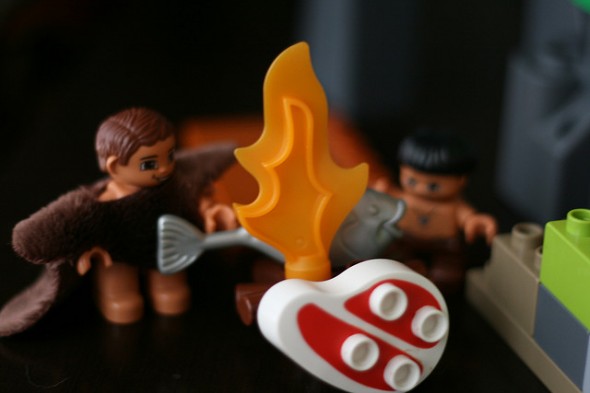
Okay, so if we cut out the grains, almost all processed foods, and dairy, you’re left with only things that occur naturally:
- Meat – GRASS-FED*, not grain-fed. Grain causes the same problem in animals as they do in humans.
- Fowl – Chicken, duck, hen, turkey…things with wings that (try to) fly.
- Fish – Wild fish, as mercury and other toxins can be an issue in farmed fish
- Eggs – Look for omega-3 enriched cage free eggs.
- Vegetables – As long as they’re not deep-fried, eat as many as you want.
- Oils – Olive oil, coconut oil, avocado oil – think natural.
- Fruits – Have natural sugar, and can be higher in calories, so limit if you’re trying to lose weight.
- Nuts – High in calories, so they’re good for a snack, but don’t eat bags and bags of them.
- Tubers – Sweet potatoes and yams. Higher in calories and carbs, so these are good for right after a workout to replenish your glycogen levels.
*If you can only afford grain-fed meat, that’s still better than grains. Do the best you can with your situation!
Steak with asparagus and sweet potato fries, grilled chicken salad, massive omelets that will fill you up for the whole morning, apples dipped in almond butter (my favorite snack ever), and so on. Pick any of the things from that list, and eat as much as you want of them (with the noted exceptions). You’ll feel better and be healthier.
How come I won’t get fat?
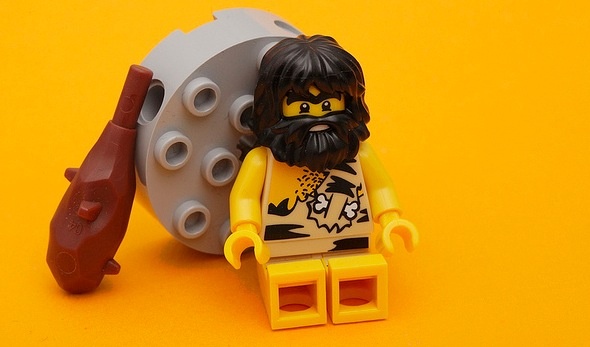
Because these foods are so nutritious and filling, you’ll be eating satiating foods that fill you up but are not carb-calorie dense.
To get the equal number of calories from a bag of Doritos or bread (which, as you know, you can eat all day long and never really feel full), you’d have to eat 2-3 Mack trucks full of broccoli and spinach.
Okay, that’s clearly an over-exaggeration, but you get the point.
A GIANT plate of vegetables and a reasonable portion of meat can keep you full for hours, while eating carb-heavy foods can result in being hungry again soon after.
Whenever I need to lose weight for vacation, I go 100% Paleo and I can drop a few body fat percentage points in a few weeks (while combining it with strength training and interval running).
As I said above, you can definitely do The Paleo Diet WRONG. If you are “full paleo” but just eating nuts and fruit, you could theoretically still be eating thousands of calories, hundreds of grams of carbs/sugar.
But I can’t give up my muffin, pasta, bagel, pizza, and bread!
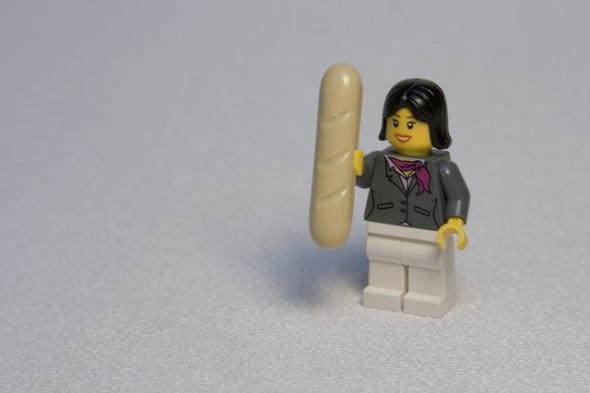
Okay then, don’t try the Paleo Diet! Simple as that.
I hear you. Because bread is amazing. And so is candy. And soda. These things are designed to be as delicious as possible.
But they don’t have a place in the Paleo Diet, so you have to decide what’s important to you right now.
If you’re happy with how you look, your energy levels are good all day, and you don’t see any room for improvement, then keep doing what you’re doing – I won’t force you to eat like this.
Consider the Mediterranean Diet which still includes portions of things like pasta or bread (note: I said PORTIONS, not platefuls)!
However, if you’ve been struggling with weight loss, have no energy throughout the day, need eight cups of coffee, hate counting calories, and want to start turning your life around today, why not give it a shot for 30 days?
TRY IT: If after 30 days you haven’t noticed a marked improvement in your quest for a better life, then go back to the donuts. It’s important to give yourself a full 30 days before passing judgment. Your body has to adjust from fueling itself on carbs and sugar to burning your stored fat for energy, which can take a few weeks.
If you’re not willing to cut out grains from your diet completely, just work on MINIMIZING those foods gradually and see how your body adjusts.
Slow transitions are often much easier to handle over the long-term; the more you can shift your diet closer to Paleo principles, the faster you’ll start to see results.
In fact, we’ve actually built a 10-level diet system as part of Nerd Fitness that slowly transitions somebody into a more Paleo-type lifestyle, because we know the biggest problem with this stuff is
When you sign up in the box below, we’ll send you both the 10-level Nerd Fitness Diet cheat sheet AND the Beginner Paleo Guide so you can cut through the confusion and start fixing your health today.
Get the FREE eBook! The Ultimate Beginner’s Guide to Paleo!
- Discover if Paleo is for you
- The one simple trick to know if your food is Paleo-friendly
- Easy Paleo recipes for beginners to get you started
This is also the approach we champion with our 1-on-1 Online Training Program and Paleo-approved flagship online course, The Nerd Fitness Academy.
The biggest problem with the Paleo Diet is actually STICKING WITH IT, so we built this course with that fatal flaw in mind, and have helped like 40,000+ students slowly transition to a Paleo Diet (if they decide it works for them) and help them stay on target.
How much should I eat of each nutrient?

Keep it simple: Always start with a good protein source with each meal (eggs, steak, chicken, fish, pork) along with some vegetables.
That’s it.
If you’re having trouble getting enough calories daily, or feeling hungry constantly, add some healthy fats to the equation: avocado, a handful of almonds or walnuts, almond butter, olive oil, etc.
If you’re feeling tired all the time, try adding some salt to your food. Going from a processed, high sodium diet to a paleo diet you will very often end up eating too little sodium, which is an essential nutrient.
As stated above, fruit does have quite a bit of sugar in it, and nuts have quite a few calories, so if you are following the Paleo Diet but not losing weight, check your fruit and nut consumption and see if you are loading up on those at the expense of vegetables and healthy protein.
What I’m trying to say is this: fat and protein should make up a big percentage of your diet.
Baaaaack up: I thought fat made you fat?
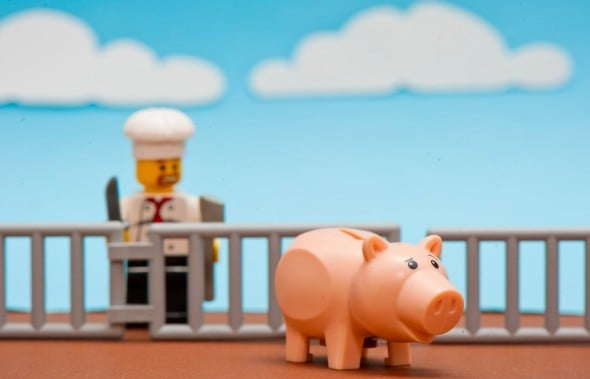
Pooooooor fat. It’s gotten a bad rap over the past number of decades, so companies have been doing everything possible to make everything low fat and “healthy!” (while adding all sorts of preservatives, chemicals, and sugar).
Yup…cut out the fat, increase the carbs….and look where THAT has gotten us.
Why has fat been vilified? Rather than get into the politics of it myself, I’ll let Gary Taubes, author of the incredibly thorough and well-researched Good Calories, Bad Calories take over.
As he discusses in article he wrote for the New York Times a decade ago [6]:
These researchers point out that there are plenty of reasons to suggest that the low-fat-is-good-health hypothesis has now effectively failed the test of time. In particular, that we are in the midst of an obesity epidemic that started around the early 1980’s, and that this was coincident with the rise of the low-fat dogma. (Type 2 diabetes, the most common form of the disease, also rose significantly through this period.)
They say that low-fat weight-loss diets have proved in clinical trials and real life to be dismal failures, and that on top of it all, the percentage of fat in the American diet has been decreasing for two decades. Our cholesterol levels have been declining, and we have been smoking less, and yet the incidence of heart disease has not declined as would be expected. ”That is very disconcerting,” Willett says. ”It suggests that something else bad is happening.”
Healthy fats are valuable additions to our diet. “Low fat” foods were created to follow conventional wisdom that fat made you fat (which as stated in the above article doesn’t stand up to scrutiny).
Now, when a company makes a low fat food, they remove the fat and have to replace the flavor with something. That “something” is usually sugar. Which gets stored as fat in our bodies. Crap.
So, fat is not the enemy. According to Taubes and Paleo folks, it has been vilified and the real focus should have been on sugar and carbs all along.
And thus in the Paleo Diet, fat makes up a large portion of one’s diet.
Do I need to eat every 3 hours?
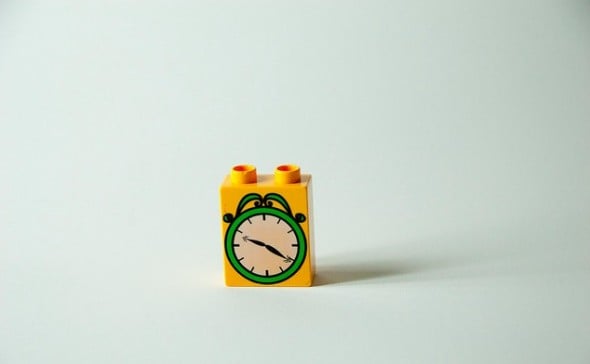
Nope. Eat when you’re hungry, don’t eat when you’re not.
Going again back to our evolutionary history, we didn’t always have the luxury of going to a vending machine or drive-through window to pick up food. Sometimes we’d go all day long, or even days at a time, without finding any food. Luckily, we’re designed to use our excess fat stores as energy in these situations.
Don’t worry about eating every three hours.
In fact, I’d recommend NOT eating all of the time, and instead focus on eating full meals!
Sometimes, it’s even okay to skip a meal or two, as long as you don’t go berserk and eat seven pizzas because you’re so hungry afterward.
Don’t worry about hitting a specific number of calories each day. If you’re not hungry, don’t eat.
This type of eating is generally referred to as Intermittent Fasting.
What are the criticisms of this diet?
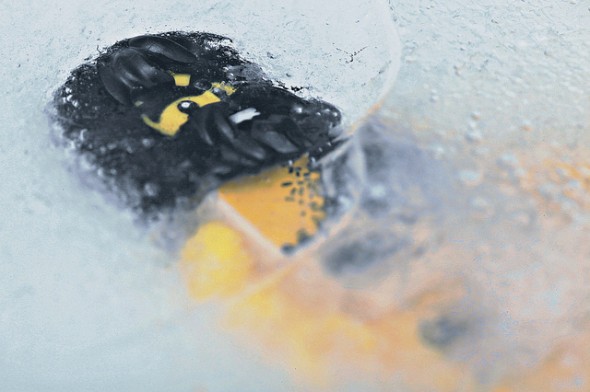
The main criticism that I continue to come across is that it’s “fear mongering” and vilifying grains in the same way that fats have been vilified.
If you really want to drive yourself mad, go read a mainstream article that’s either pro or against the Paleo Diet. In the comments, you’ll find a bunch of dietitians yelling back and forth at each other citing different studies and sources and then calling each other wackjobs.
So, disregarding the fear mongering and dogma surrounding the diets, what are the ACTUAL critiques of the Paleo Diet?
#1) If you’re not careful, this type of diet can get expensive. But as we know, with a little research, we can make eating healthy incredibly affordable. Admittedly, while I recommend eating organic fruits and veggies, free range chicken, and grass-fed beef whenever possible, these products can be a bit more expensive in conventional stores due to the processes needed to get them there.
However, farmers’ markets often have well-priced meats, eggs, fruits, and vegetables that are locally grown and incredibly healthy. Even if you’re spending a little more money than before, when you factor in your overall health, spending a few extra bucks on healthier food now is a wiser investment than thousands later on costly medical expenses.
Also, if you’re really short on cash, eating the non organic or grass fed version of a meat, vegetable, or eggs is still better than eating breads, pasta, fast food, and the like.
Most people simply compare the cost of a paleo meal with ramen noodles or pasta and bread and determine Paleo is prohibitively expensive. Sure, it’s more expensive than those foods, but if you are smart with your money you can eat a much healthier meal and do so pretty inexpensively.
(This doesn’t even factor in the whole “if you eat cheap unhealthy food now, you’ll pay thousands in medical bills and hospital visits and medications later” argument which is valid too).
#2) It’s difficult (though getting easier) to eat Paleo in today’s society! A normal breakfast in the US consists of bagels, muffins, toast, cereal, or donuts. NONE of those things have any nutritional value, they’re loaded with tons of carbs and calories, and are composed of processed grains that can jack up your stomach.
Eating out at restaurants can get tough too, and “paleo-approved” is not something you’ll usually find on a menu. Eating in this manner requires careful planning and tons of willpower, but it can be done if you’re dedicated.
#3) “But cavemen had short lifespans! Of course they don’t have the diseases we do. We live way longer now” – I agree with you here, but only because you don’t have to deal with the dangers of living back then. Again we don’t really care to live like cavepeople.
This is SIMPLY a construct that can help many make more informed food choices.
#4) “But what about the books and people that say “we’re not designed to eat grains” is garbage” – that plenty of societies around the world consume grains and aren’t fat and unhealthy like us.
The China Study is frequently cited when criticizing the Paleo Diet – focusing on a vegetarian diet and consuming rice is healthier than the Paleo Diet. I respectfully disagree with that nutritional philosophy and strongly disagree with the conclusions drawn from that book [7], and will leave you to make your own conclusions based on your own self-experimentation.
You’re here to learn about the Paleo Diet though, so let’s keep the focus there
#5 “But this is just a meat diet, and eating all meat is bad!” First of all, consider your sources and do your research before jumping to the conclusions.
Next, this is not an all meat diet or uber-low carb diet like Keto or Atkins. The biggest component of the Paleo Diet?
Vegetables! Every meal in a true Paleo diet has a moderate amount of healthy (properly raised chicken, grass-fed beef, hormone free, etc.) meat combined with nutritious veggies or a moderate amount of fruit.
#6 “The Paleo Diet is too restrictive and I can’t live like this.” This is the most valid criticism I personally have of the diet, as the best diet plan is the one you actually stick with and follow through on! The goal shouldn’t be to go “full paleo” for a few weeks only to go back to how you were eating before.
Instead, the goal here should be to rethink your relationship with food and develop a strategy that you can live with permanently. There’s nothing worse than going on diets and gaining and losing the same 20 pounds over and over. The Paleo Diet, like other diets, WORKS ONLY IF YOU STICK WITH IT PERMANENTLY!
This makes sense after all: make temporary changes, get temporary results, right?
#7 “Steve, I hate vegetables, HALP.” I got you. Heres how to start liking veggies.
We know this all too well, and we have helped thousands of people slowwwwly transition their diet over a long period of time to make change less scary, more permanent, and thus make the weight loss permanent too!
If you’re overwhelmed or scared of changing too much, or maybe you’re just sick of dieting and want to find a solution that works for your busy lifestyle and situation, schedule a call with us to learn more about our 1-on-1 coaching program:
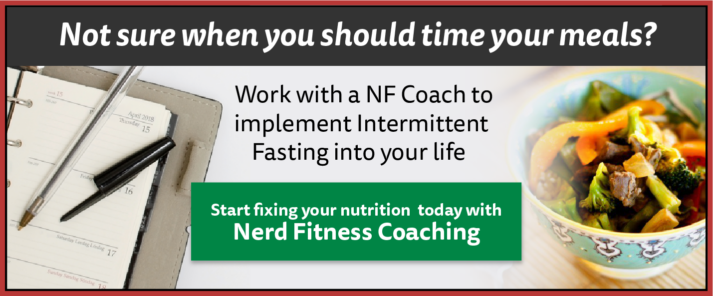
Meh, I’m still not convinced.
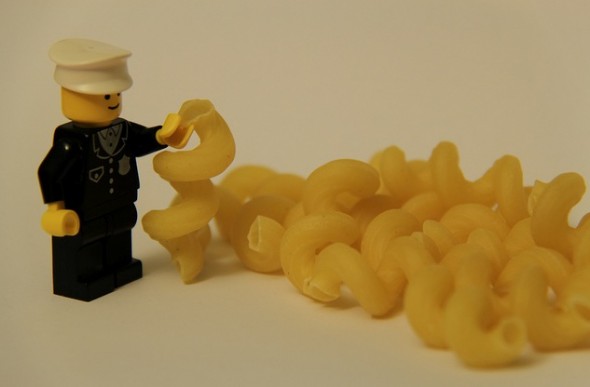
The human body is so incredibly complex that I doubt we’ll ever have a definitive answer on the best possible diet. This one might sound like a fad to you, or it’s too restrictive, complicated, etc.
If you’ve read this far, I assume you’re considering giving it a shot.
Take 30 days and give it a shot – cut out the grains and dairy, start eating more vegetables and fruits, eat more humanely raised and non-grain fed meat, cut out the liquid calories and sugar, and see how you feel after the month is up. If you’re analytical and want numbers to use in your final verdict, get your blood work done at the beginning and end of the month.
Take a picture of yourself now, and then another 30 days from now. I bet you’ll be surprised with how your body transforms.
I hope that AFTER those 30 days you’ll have adopted some of the principles, noted how much better you feel, and continue to live with an improved relationship with food.
What does Steve think about the diet?
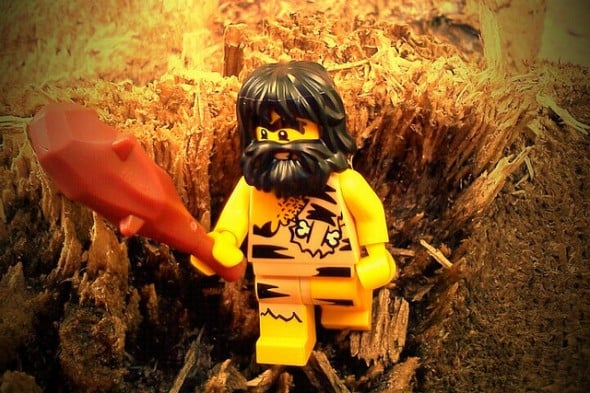
I’m a fan of the Paleo Diet because it makes logical sense to me.
I know we existed as a species 150,000 years ago, I know the agricultural revolution didn’t happen until 10,000 years ago, which means we had 140,000 years without grains. In that time we learned to thrive as a species without grains (or else we wouldn’t be here).
The other reason I’m a fan is because it provides simple – though strict rules to follow. I love mental models that help us make sense of the world, and I think for SOME people, the Paleo Diet will really help them cut down on overeating.
I personally do NOT do a Paleo Diet, but I do have rules that I follow.
Do whatever makes you happy and fits in your schedule. I like this kind of stress-free eating.
Regardless of whether or not grains should be vilified, I love this diet because I know it WORKS. I know people that have lost incredible amounts of weight and changed their lives within a matter of months.
People like Staci:
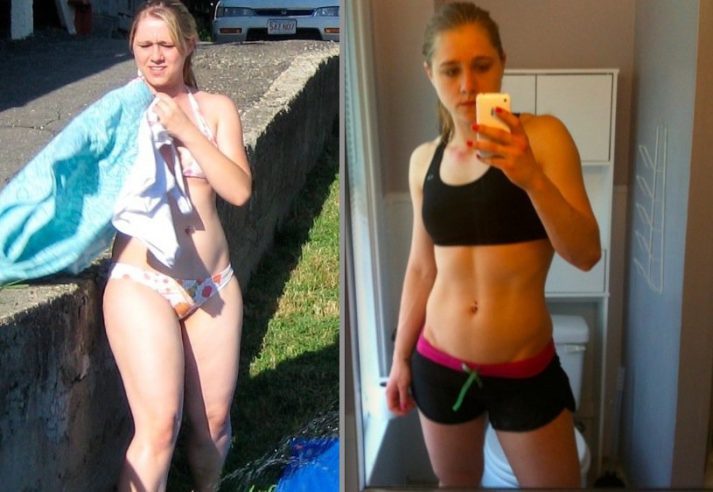
Regardless of how you feel about grains, we can all agree that eating more natural foods and less processed foods is better for you.
Where can I get even more info?
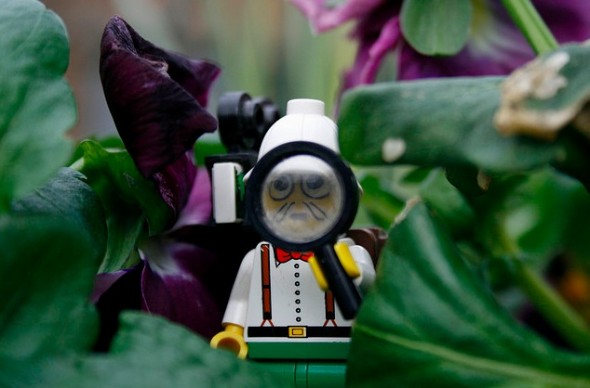
If you’re looking to read more about the Paleo Diet, I got you covered.
For starters, I’ve seen thousands of people succeed with a Paleo Diet, and I’ve seen countless thousands more FAIL with the Paleo Diet?
What’s the difference? The strategy they’ve implemented to follow through on it! Sure, some people can completely overhaul their diet and go “cold turkey” on giving up processed foods, grains, and sugar, and never look back.
Most people however try to completely overhaul their diet instantly, their body hates them, and they quickly abandon Paleo principles and think it’s not for them.
I believe in a different approach, and that’s having a strategic blueprint to follow that allows you to SLOWLY adapt your diet in specific ways so that your body adjusts comfortably to a new lifestyle.
At the same time, I know there are a million questions to ask about the Paleo Diet, how to adapt it to a busy lifestyle, what to do if you’re a paleo parent and have picky eaters in your family, or how to stay on track when everybody around you still wants to eat non-paleo foods.
These are the specific problems we’ve set out to solve, and have helped 30,000+ students transform their diet in The Nerd Fitness Academy – it includes a 10-level diet system with ‘boss battles’ between each level so you know when you can ‘level up’ and adjust your diet.
Small, non-scary, tweaks to your nutritional strategy, specific meal plans to follow, and a supportive community to help you implement these changes in your life, even if you’re busy!
Now, even if you can’t check out the NF Academy yet, we have plenty of other resources here at Nerd Fitness including recipes that are paleo or paleo-ish to get you started!
Here’s our full list of our Paleo/Healthy recipes, and here are my three favorites:
If you’re curious about The Paleo Diet’s recent popularity and thus it’s criticisms, we’ve written two other pieces on Nerd Fitness that might be of interest:
“The Paleo Diet Debunked??” where I address a few of the more recent criticisms that have popped up.
“In Defense of a Paleo-Ish Diet” where I cover how to live a mostly Paleo lifestyle but still enjoy the modern benefits of society.
Easing Into It
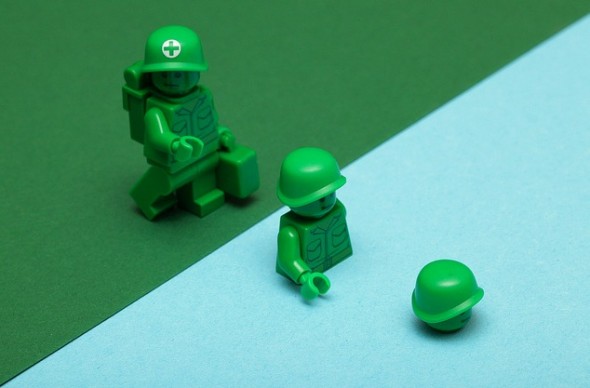
Maybe you’re ready to try out this Paleo lifestyle, but you can’t commit fully. There are certain foods you refuse to give up, or you can’t afford to buy grass-fed beef at the moment.
That’s okay!
If you can even make a few small changes here and there (cut out liquid calories, switch out your rice for steamed vegetables, cut back on bread, etc.) you’ll start to see some changes.
Remember, 20% healthier is better than 0% healthier – as you get more comfortable with the changes you can increase that percentage.
You can also follow our favorite strategy. After all, I know how tough it is to stay loyal to a strict diet, especially without a plan to follow. It’s why we created free resources that can help you reach your goals faster without you also going crazy.
Get rid of the temptation – if you’re gonna go at this thing with a full head of steam, remove all the junk food from your house. It’s going to take a few weeks for your body to adjust to burning fat instead of glucose, and you might want to eat poorly here and there. If there’s no food in your house to tempt you, it will be much easier to stay on target.
Now, it’s your turn.
Have you tried the Paleo Diet yet?
What was your experience like? Have a criticism of the diet that I didn’t cover before? Do you have another paleo recipe resource?
Remember, one of the major Rules of the Rebellion is to question everything!
I hope this article gives you some food for thought (terrible pun, I know), and gives you the permission to question conventional wisdom and start addressing the issues in your diet!
In addition to this Beginner Paleo Guide, I hope you consider checking our our 1-on-1 Coaching Program as well. We have designed this program from the ground up to help people like you change their lives and fix their nutrition in a way that doesn’t suck.
Now, go forth. And eat like a caveman.
-Steve
PS: I’ll leave you with one final mention of the Nerd Fitness Academy – it essentially gamifies your experience in transitioning into a Paleo lifestyle and diet, and provides you with specific instruction, meal plans, workouts, and a supportive community.
The Academy has a 60-day money back guarantee and helps remove all of your guess work to stay on track.
###
photo sources: cavemen elephant hunt, caveman cooking over fire, cavemen hunt paleo bear, milk truck logo, darth vader vendor, storm trooper tomato, lego cook, chef and lego pig, lego explorer, lego muffin, lego bread and carbs, frozen caveman grok lego, lego clock, lego caveman forging for food, caveman with wheel, darth vader and ostrich lego, easing into water lego, lego man with pasta








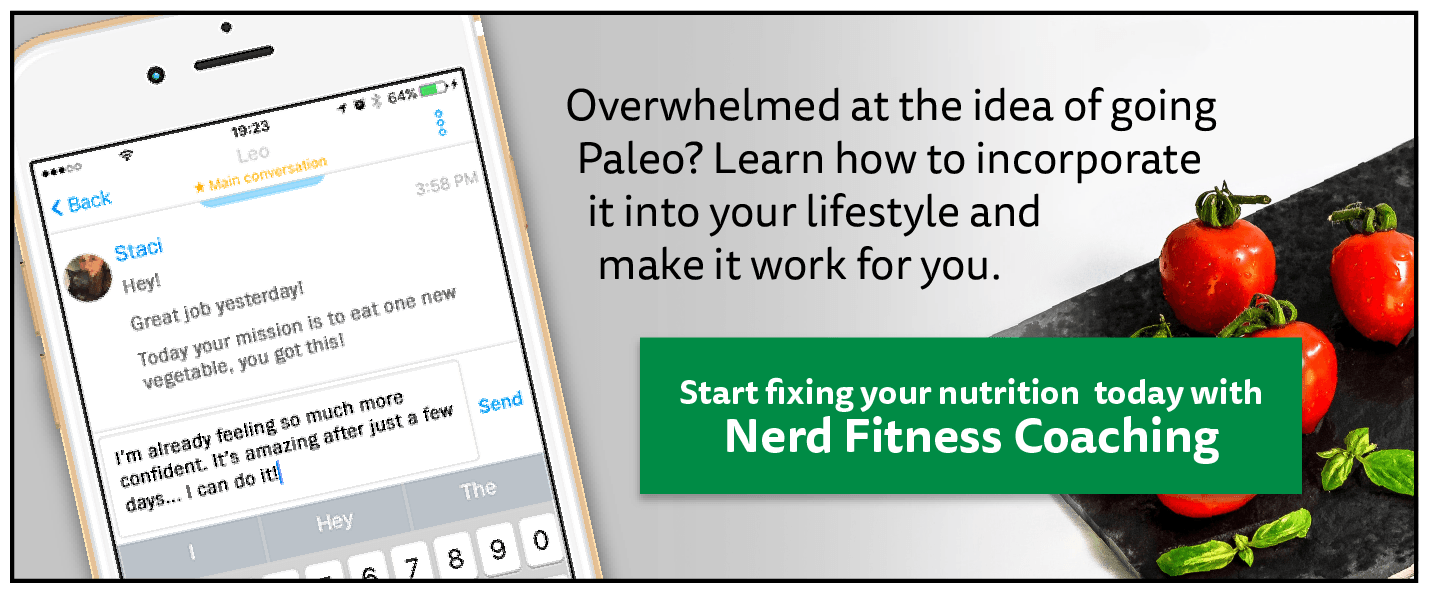






















 For now classes are 6pm and 640pm at 2840 Wildwood st in the Boise Cloggers studio.
Book your class NOW!
click this ==>
For now classes are 6pm and 640pm at 2840 Wildwood st in the Boise Cloggers studio.
Book your class NOW!
click this ==>








